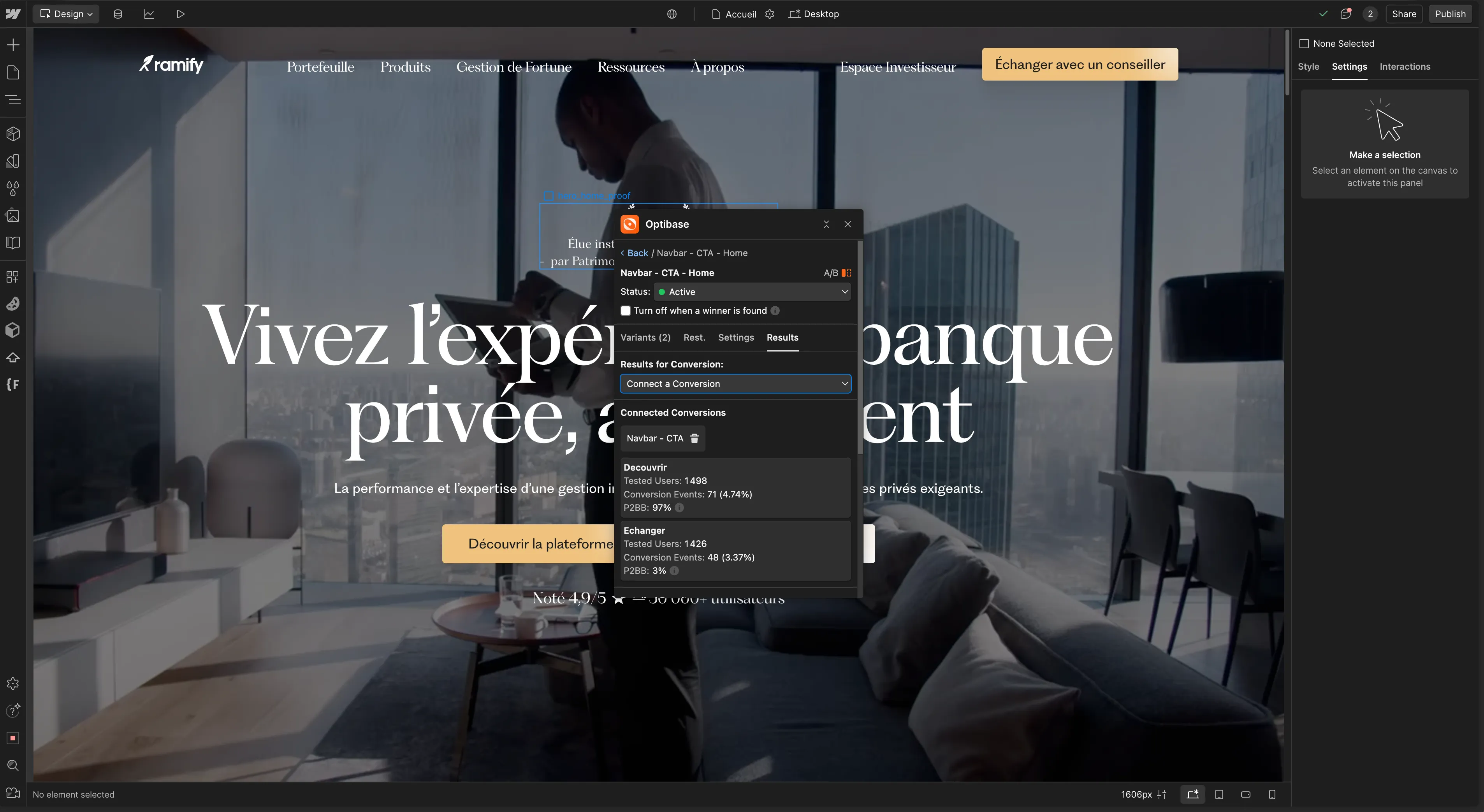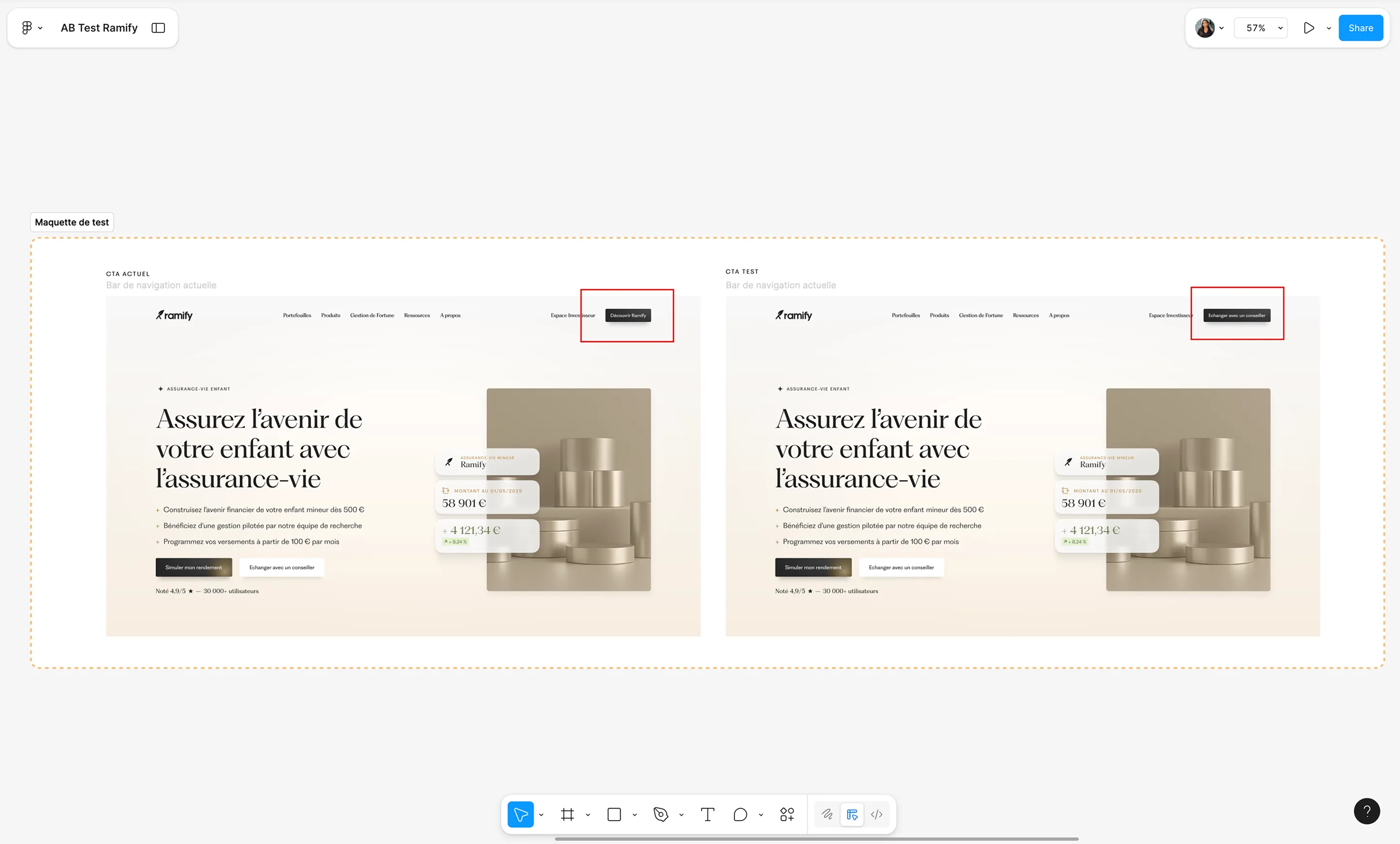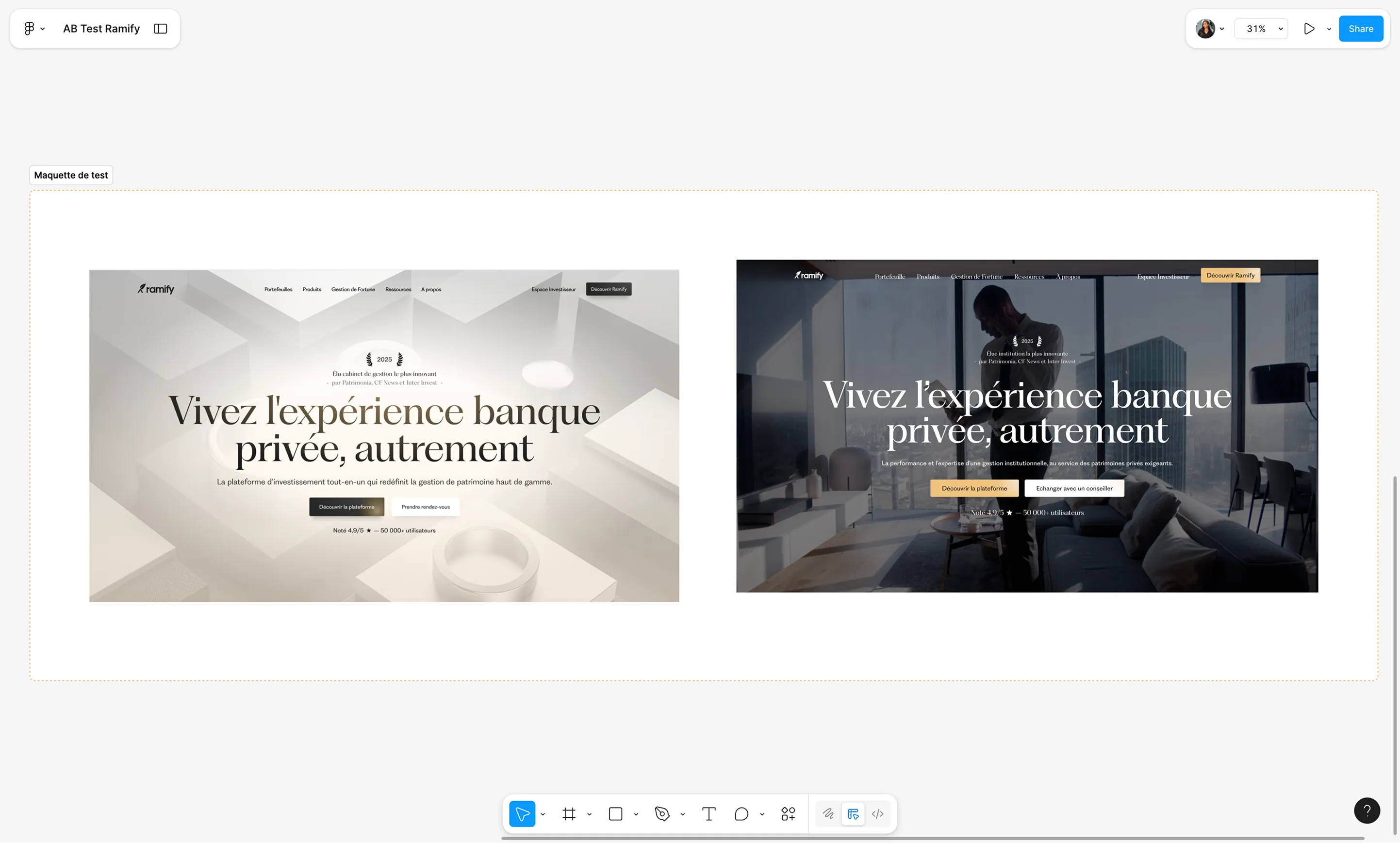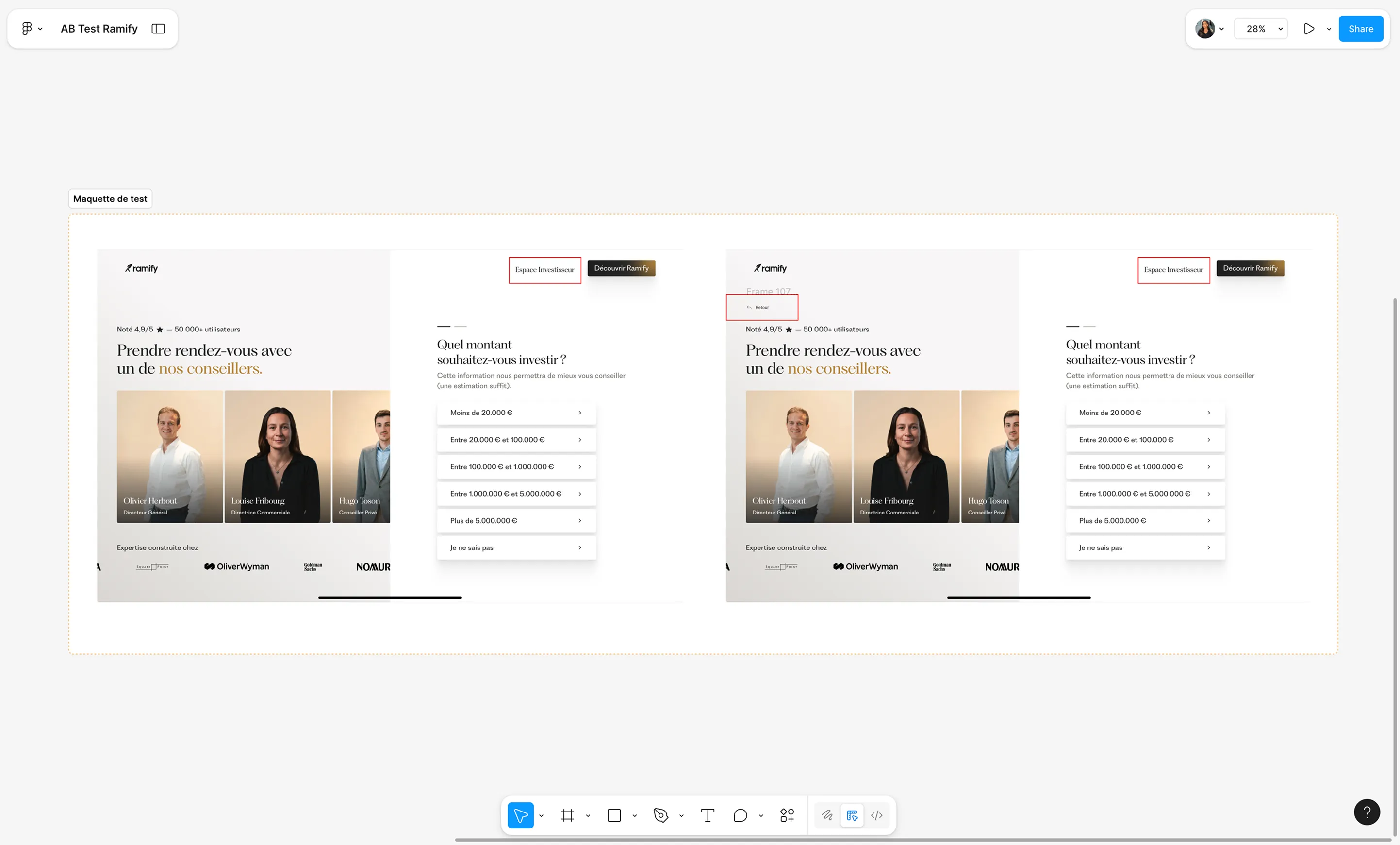.svg)

Following a full website redesign, Ramify — a French fintech startup — faced a familiar challenge: turning a newly launched site into a high-performing conversion engine.
Even well-designed websites are built on assumptions. The team at Digidop, Ramify’s Webflow agency, recognized that optimizing the site meant moving from intuition to iteration. They needed a scalable strategy to analyze user behavior, validate hypotheses, and improve conversion rates based on real data — not gut feeling.
To avoid flying blind, Digidop designed a 4-phase conversion rate optimization process and brought Optibase in as the testing engine behind it:
They integrated both Microsoft Clarity (for qualitative behavior) and GA4 (for quantitative insights). This uncovered critical friction points like:
Using these insights, they developed and prioritized hypotheses based on potential business impact and implementation complexity. Examples:
Each hypothesis had clear KPIs attached — from click-through rate to scroll depth and final conversion.
Optibase’s Webflow-native integration allowed Digidop to:

Digidop ran multiple high-impact tests using Optibase. Here are three standout results:



Each test directly improved the site’s ability to convert visitors into signups — and informed the next optimization cycle.
This collaborative testing process led to several key insights:
Optibase gave Digidop the ability to test ideas quickly and confidently without relying on developers. With its native Webflow integration and built-in analytics, they could run weekly experiments, analyze results in real time, and continuously improve performance.
As outlined in Digidop’s case study, this structured A/B testing strategy — powered by Optibase — helped Ramify fully unlock the value of its redesign and turn its Webflow site into a scalable growth engine.